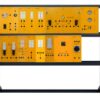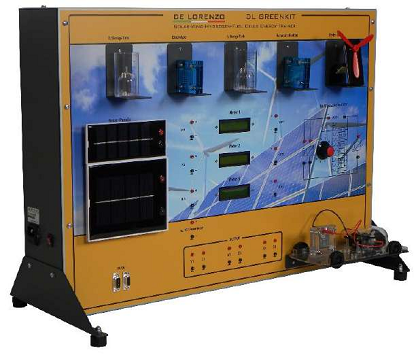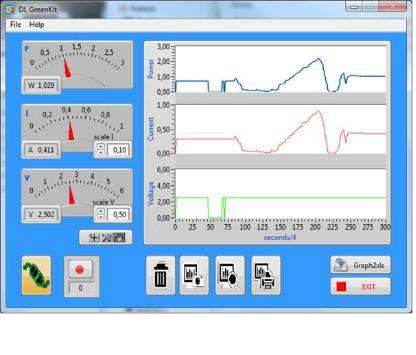TRAINING OBJECTIVES
Study of a solar system
Voltage and current in a solar panel as a function of light intensity
o Measuring Voc and Isc characteristics of a solar panel
o Influence of temperature on solar panels
o Connecting solar panels in parallel
o Connecting solar panels in series.
o Influence of tilt angle on solar panels
o Effect of shade on solar panels
Current-Voltage characteristic, power curve and efficiency of a solar panel.
o Study of solar panel under load. (Tracing the VI and power curve to determine MPP).
o Solar panel efficiency
Study of a wind system
The wind energy experiment-study of influence of wind speed and direction
o Studying and understanding the power from the wind
o Influence of wind speed on generated power.
o Influence of wind direction on generated power.
The study of influence of the wind turbine characteristics on generated power.
o Influence of the number of rotor blades.
o Influence of the pitch.
o Influence of the blades shape.
The study of current-voltage characteristic of the wind generator; the influence of the load over rotor movement
o Trace the current-voltage characteristic curve of a wind generator
o Finding the MPP for different wind speeds (Tuning for max. power)
o Study the “stability” of the wind turbine when it is influenced by the load (braking mode)
Study of a fuel cell system
Understanding Fuel Cell General Installation
Understanding Fuel Cell Structure (Assembling a fuel cell)
Electrolyser: Producing Hydrogen as an electrical energy storage method
o Determining the Minimum Voltage for Water Decomposition
o Determining the flow of gas generated by the electrolyser
o Determining the characteristic V-I curve of PEM electrolyser.
o Energy efficiency and faraday efficiency of PEM electrolyser.
Fuel cell: Producing electrical energy from stored Hydrogen.
o Determining the V-I characteristic and power curve of a PEM fuel cell.
o Energy efficiency and faraday efficiency of PEM fuel cell.
Study of a hybrid (Autarkic) system
o Implementing hybrid wind solar power system with hydrogen storage.
o Implementing hybrid fuel cell solar power system: studying the autonomy of a hydrogen powered car.
COMPONENTS INCLUDED
Reversible PEM fuel cells
PEM Electrolyser
Reversible hydrogen fuel cell to assemble
Hydrogen and oxygen tanks
Syringe
Motor and fan with propeller blade
1 Watt solar panel
0.75 Watt solar cell
Mini wind turbine (wind power generator)
o Blade pitch, blade profile and number of blades can be evaluated
o Vane aligns the turbine automatically to the direction of the wind
o Special 3 phase alternator for higher output power
Vehicle chassis with LED light & motor
Battery pack with connecting leads
Three DC instruments: range 10 V, 2 A.
Decade Resistor
GENERAL FEATURES
Average training hours: 8h.
Approx. packing dimensions: 0.81×0.61×0.61 m.
Net weight: 29 kg.

















